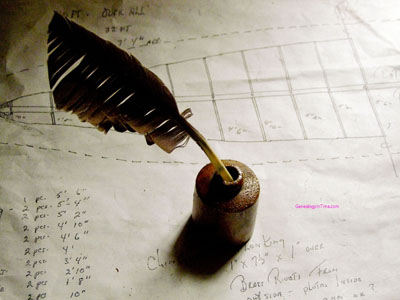Migration
22. Port of Entry – This is a fun one for people looking through passenger ship manifestos to track down ancestors arriving in Northeastern United States or Eastern Canada. Consider this possibility: they may have arrived by ship in the other country. People migrating to Eastern Canada could have arrived in Boston or another port on the Eastern US seaboard. Similarly, ancestors in the Northeastern United States may have first arrived in Montreal or another Eastern Canadian port and then travelled to the United States.
To understand why this may have occurred, it helps to think like your ancestor. Border guards at the Canada/US border were only formally started in May 1924. Before this time there was usually not even a guard at the border. Thus, crossing the border was not an impediment like it is today. Given that your ancestor’s choice of ships was often limited, they would have planned their migration route based on cost, convenience and accessibility. The Canada/US border would not have been a factor at all.
23. Migration Home - First generation migrants to a new region or country often got homesick for ‘the old country’. When looking for an ancestor where the trail has run cold in the ancestor’s later years, consider the possibility that they may have moved back to the region where they were born or where their parents were born. This is more common than most people realize.
24. Migrating Family Units – When a family migrates long distances (and especially across an ocean), don’t assume that all the children migrated with the parents. Check the age of the children at the time of migration. Older children may have stayed behind in the old country. This is a fact that is often overlooked when tracing ancestors.
25. Land Records – If your ancestors migrated to farmstead, then they most likely received a land grant. Always check federal and state government land grant records.
26. Place of Birth – One of the great challenges of genealogy is dealing with conflicting information from different sources. For example, a common problem is having two documents showing two different places of birth for the same individual. It is a well known fact that immigrants often change their name when they move to new countries (see Why Immigrants Change Their Name). For example, immigrants moving to English-speaking countries often try to anglicize their family name. However, it does not necessarily end at just a name change.
Over time immigrants will sometimes want to mask their place of birth and make it look like they were born in their new country, not their old country. Often this is done to fit in better in their new community.
It is particularly common for an immigrant to change their place of birth later in life if their real place of birth has fallen out of favor. For example, during World War I and II immigrants living in the United States would hide the fact they were born in Germany. Always consider this as a possibility when looking at conflicting information on place of birth and any other information that would tie an individual back to the old country. Bottom line – people often changed their place of birth after they had been in their new country for several years.
Further Resources
Why Immigrants Change Their Name


